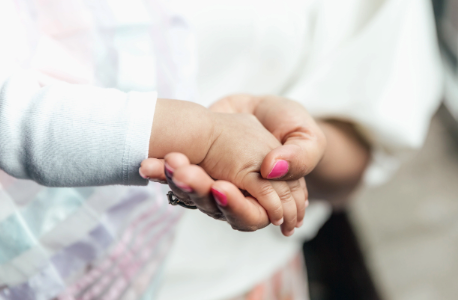Mindful Parenting: Strategies to Nurture a Child's Developing Mind

Our most recent meet up of The Nook had Ramina Khusnutdinova (Master in Educational Psychology and Clinical Counsellor) sharing the latest research on brain development, how a child's brain is wired, and how it matures.
In order to know what is happening when your child is reacting in a strongly emotional way we have to understand how the different parts of their brain work.
The brain stem controls bodily functions like heartbeat and breathing. It develops in utero.
The amygdala is responsible for our emotions and attachment. It works together with our brain stem to engage our "fight, flight or freeze" response. It is developed at birth.
The hippocampus plays a major role in memory and learning. It helps transfer learning from short term to long term memory and also plays a role in processing emotions, so can help us remember past experiences and the emotions tied to them. The hippocampus continues to develop until around age 2.5.
The pre-frontal cortex is responsible for our higher brain functions, such as reasoning, problem solving, comprehension, creativity and impulse control. It is not fully developed until age 25.
Dr. Dan Siegel, psychologist, researcher and author of The Whole Brain Child developed the hand model of the brain, illustrated below, to explain what happens when the child experiences an event that triggers their "fight, flight or freeze" response. On the right is the pre-frontal cortex engaged with the limbic system, hippocampus and brain stem in a cohesive way when the brain is not stressed. On the left is a brain under stress. The pre-frontal cortex is disengaged, the child has "flipped their lid" and can no longer respond in a reasoned manner.
What most parents have learned is that being asked to clean up their toys can trigger the same amygdala response in a child as being attacked by a bear!
So, what can we do?... As adults it is up to us to engage OUR prefrontal cortex during these periods of dysregulation and reconnect with our child to help them regulate themselves and re-engage their prefrontal cortex.
With younger children we can use a simplified animal model to help them learn how their brain works in a playful way. For example: an ape represents the brain stem (it takes care of breathing, heartbeat, running); an elephant represents the hippocampus (it is good at remembering and learning); a guard dog represents the amygdala (our emotions - it is there to protect us); a wise old owl represents the prefrontal cortex (how to be in control of your emotions, how to make good decisions).
When the guard dog is there and it's barking because of some sort of stress, the elephant and the owl disappear, so not only can the child not be in control of their emotions, but they can't learn anything new. (This is why we need to teach and talk about these ideas in a calm moment, not for the first time during a moment of stress). What we need to do is calm the guard dog. Ask your child what they need to do to calm down their guard dog. It might be a hug from a parent, a song, a hug with a stuffy. When the guard dog stops barking the elephant and the owl come back. It may be helpful to use pictures or toy animals to help illustrate this idea to your child.
You can model this idea with your own language. For example, "My guard dog is really barking right now! I am going to sit down and have a drink of water to help it calm down." When you are feeling upset you can model how you regulate your own emotions with your words and behaviour.
How can we nurture the brain from age 0-3 years?
Primarily, lots of movement, especially outside. A great practice is to start the habit of morning exercise.
Children in this stage of development need plenty of opportunities to explore the world both visually and in a tactile way. When they dump a container of rice out on the floor they are not trying to annoy you they are exploring their world. Be creative with how you can provide situations that allow them to discover their world. Sensory bins can be a container filled with dried lentils and plastic animals to discover while sifting through or a basket filled with different textured scarves and ribbons.
Ages 3-5?
At this age they will start to ask lots of questions. They are beginning to develop a sense of logic. Nourish this type of curiosity about the world. When you don't know the answer to their questions offer to find out together. This will help them feel that their question matters, which will lead to them being willing to continue to ask questions and not feel inadequate when they don't have all the answers. If you want to avoid looking things up on your phone and increasing screen time for your child, offer to take your child to the library at a later time to find out. Showing an interest in what your child is interested in will also be a great bonding experience for the two of you!
By understanding how our brains work, you as the parent can step in and help an emotionally dysregulated child calm down by remaining calm and in control of your own emotions. Model regulating strategies by taking a moment to calm yourself first when necessary and explain to your child what you are doing. Emotional regulation develops with practice, but remember that prefrontal cortex takes a looong time to fully develop!
Contributed by Shauna Farrell

